This is one in a series of posts on the Fujifilm GFX 50S and 50R. You should be able to find all the posts about that camera in the Category List on the right sidebar, below the Articles widget. There’s a drop-down menu there that you can use to get to all the posts in this series; just look for “GFX 50S”. It’s also in the Z6/7 category.
Here’s another informal comparison test that contrasts the Fuji 100-200 mm f/5.6 zoom on the GFX 50R against the excellent Nikon 70-200/2.8E on the Nikon Z7. The Z7 and the GFX have the same resolution horizontally, but I’m a fan of 4:3 pictures, so I’m going to equalize for image height. If you like wide aspect ratios, you may consider that to be stacking the deck.
Here’s the scene with the GFX and the zoom set to 100 mm, with the target area in the upper right corner. The trees are about 500 meters away.
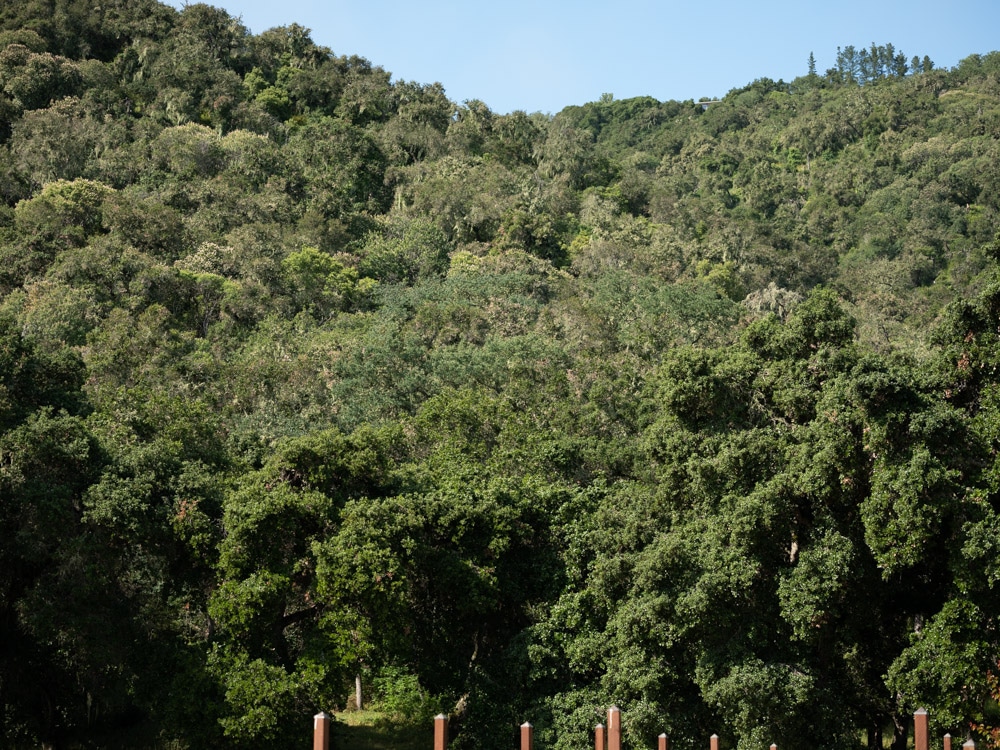
Making three shots for each variation and picking the sharpest, I exposed at base ISO of 100 for the GFX, and 64 for the Z7. I used pinpoint AF on the Z7, which means that both cameras were using CDAF. The CDAF on both of them is so good that there was far more variation between the sets of shots than there was within each series of three at the same settings. I could almost have flipped a coin to pick the sharpest. I used AF-S and a small spot, focusing on the target grove of trees. Images developed in Lightroom, with default settings except:
- WB set to Daylight
- Adobe Color Profile
- Sharpening 20, radius 1
I did not try to defeat Lightroom’s silent distortion correction.
We’ll look at some very tight crops.
If you’ve seen these here before, just jump to the images. If not, I need to spend some time telling you how to interpret them. They’re at roughly 250% magnification, enlarged to 700 pixels high on export from Lightroom. If you just want a rough idea of the differences, just look at the images as displayed in-line in the posts. However, if you wish to compare these images in detail, you should view these images by clicking on them to see the source files, then set your browser for 100% zooming. Even better, download them and make Photoshop stacks.
No matter what you do, these crops are all going to look horrible. I’m blowing them up so much so that they will represent the original file after JPEG’s discrete cosine transform has had its way with them. If you want to get a good idea of what the images would look like printed, get far away from your monitor. No, farther than that. Put a bunch of the images up on the screen and back up until the best one starts to look good. Then look at the others. There’s another reason why these images won’t look like the best thing the camera/lens combination can deliver. They’re demosaiced with Lightroom. Lightroom is not awful, but for a particular image, there are usually better raw processors. I use Lr because it’s a de facto standard, because I know it well, and because it’s got good tools for dealing with groups of images.
Here’s how to use these highly-magnified crops. The dimensions of the GFX sensor is 8256×6192 pixels. If we make a full-frame print from the GFX on a printer with 360 pixels per inch native driver-level resolution, like the Epson inkjet printers, we’ll end up with a 23×17.2 inch print. The 317×246 pixel crop you’re looking at will end up 0.8×0.68 inches (2.12×1.74 cm). Let’s imagine that you or your viewers are critical, and will look at the 23×17.2 inch print from about 18 inches (conventional wisdom is that the distance would be a little greater than that, or 29 inches (the diagonal), but you did buy a high-resolution camera for a reason, didn’t you?). The Z7 crops are 282×219, so they are blown up a bit more to make the picture height the same. As I said earlier, that stacks the deck against the Z7.
The next step is dependent on your monitor pitch, which you may or may not know. Turns out, you don’t have to know it. Just take the 250% crops and view then at 1:1. How high are they? Get out your ruler and measure, or just guess. Let’s say they are 6 inches high. 6 inches is about 7 times 0.8, so in order to view the crops the way they’d look from 18 inches on the print is to view them from 7 times as far away, or 10.5 feet.
Everything here scales proportionately. If the image on your screen is bigger than 6 inches, increase your viewing distance by the ratio of your image height to 6 inches. If you think your viewers are going to almost get their nose to that print and look at it from six inches, divide that 10.5 feet by 3, and look at the image on the monitor from three and a half feet away.
In the center, with the Fuji zoom at 100 mm and the Nikon one at 70 mm to equalize the vertical field of view. The Nikon shots are one stop wider to make diffraction and DOF the same.
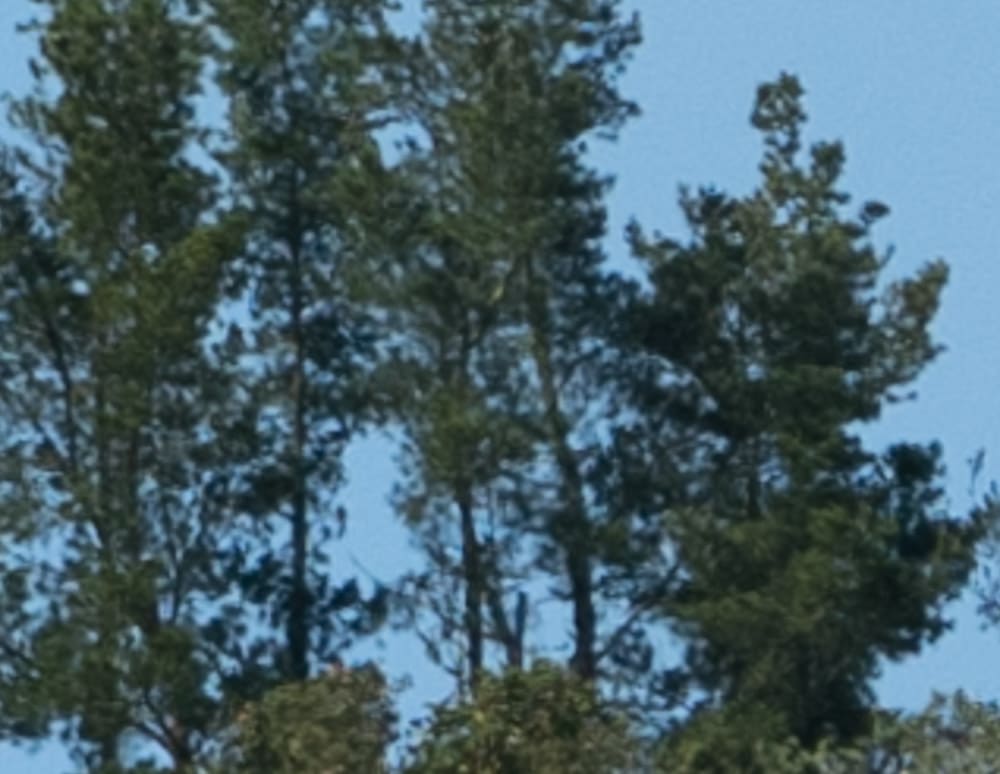
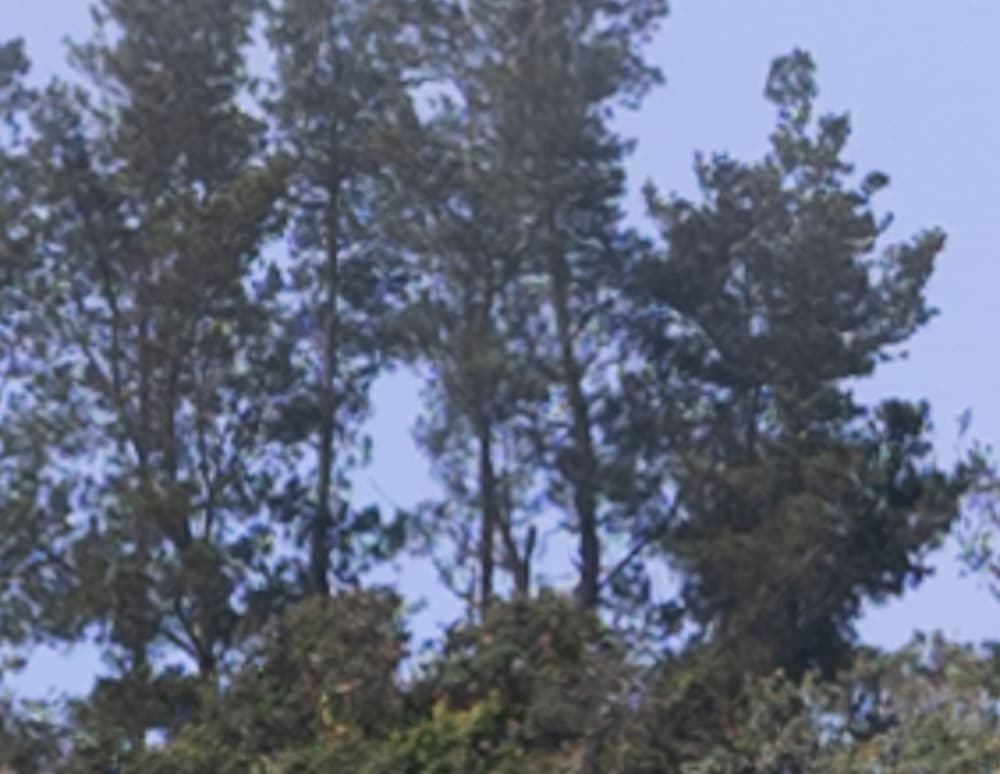
Even using Adobe Color for both cameras, the color rendering is quite different. But what’s interesting to me here is that the Fuji setup is very slightly sharper. That comes from the greater magnification of the Z7 image, which is necessary to correct for the difference in pixel-count sensor heights. The Fuji lens, which is low in contrast when compared to other native GFX lenses, has more contrast than the vaunted Nikon E lens.
Stopping down,
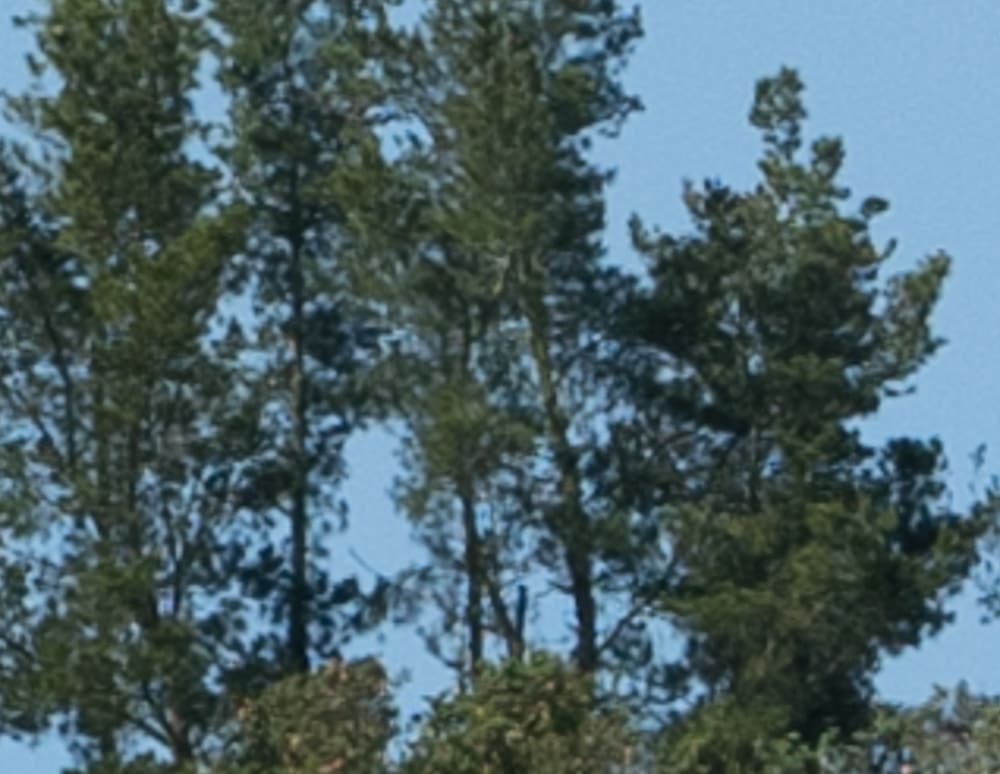
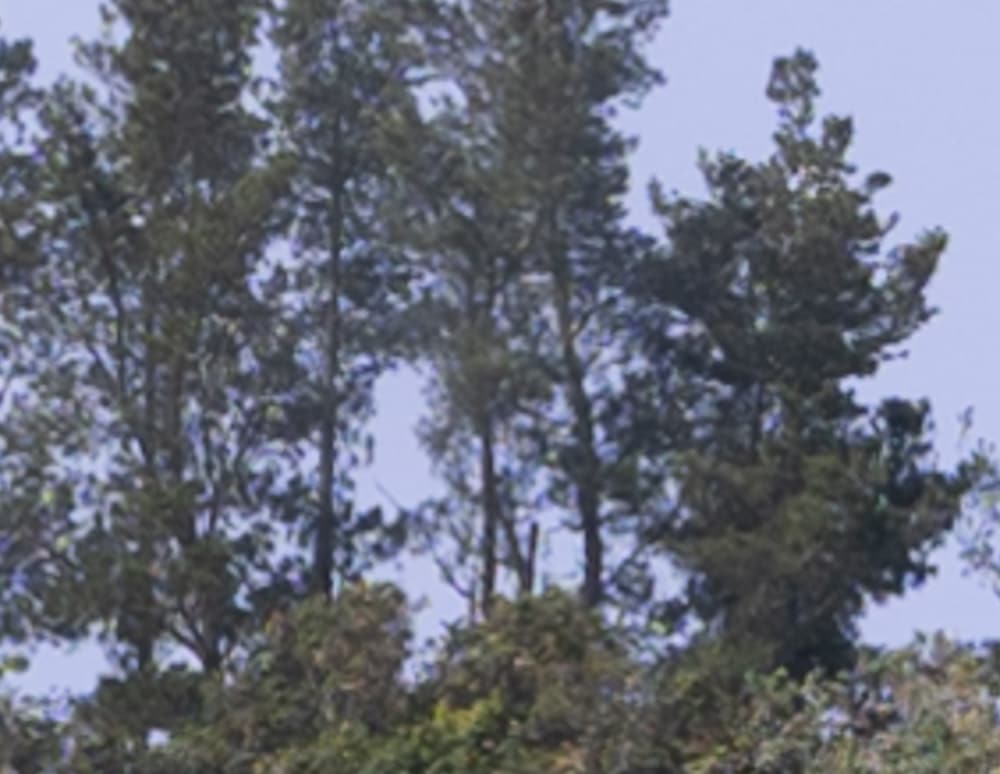
Again, the Fuji is sharper and has higher contrast.
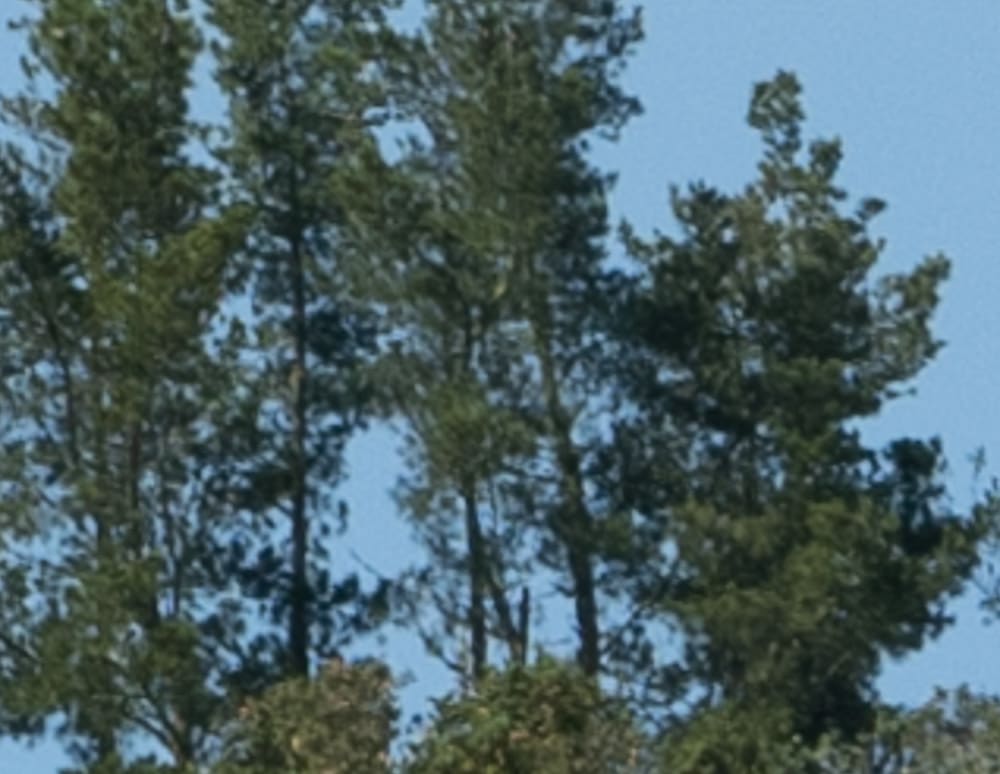
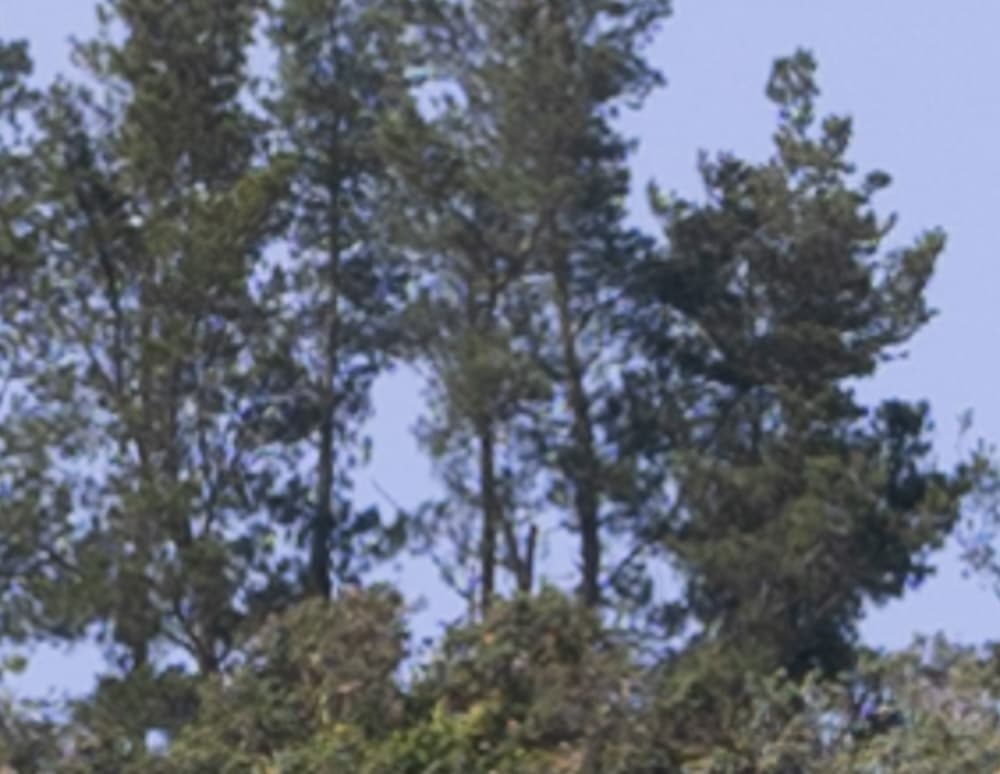
Same thing here.
In the upper right corner of the Fuji frame, and the upper right corner of a 4:3 crop of the Nikon frame:
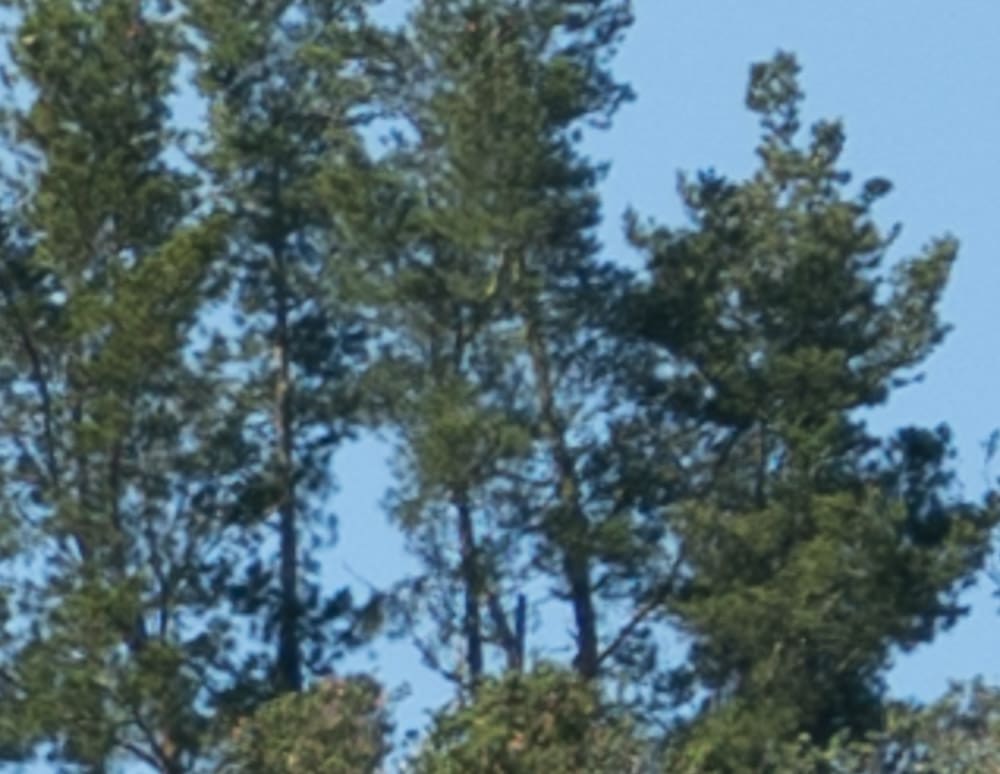
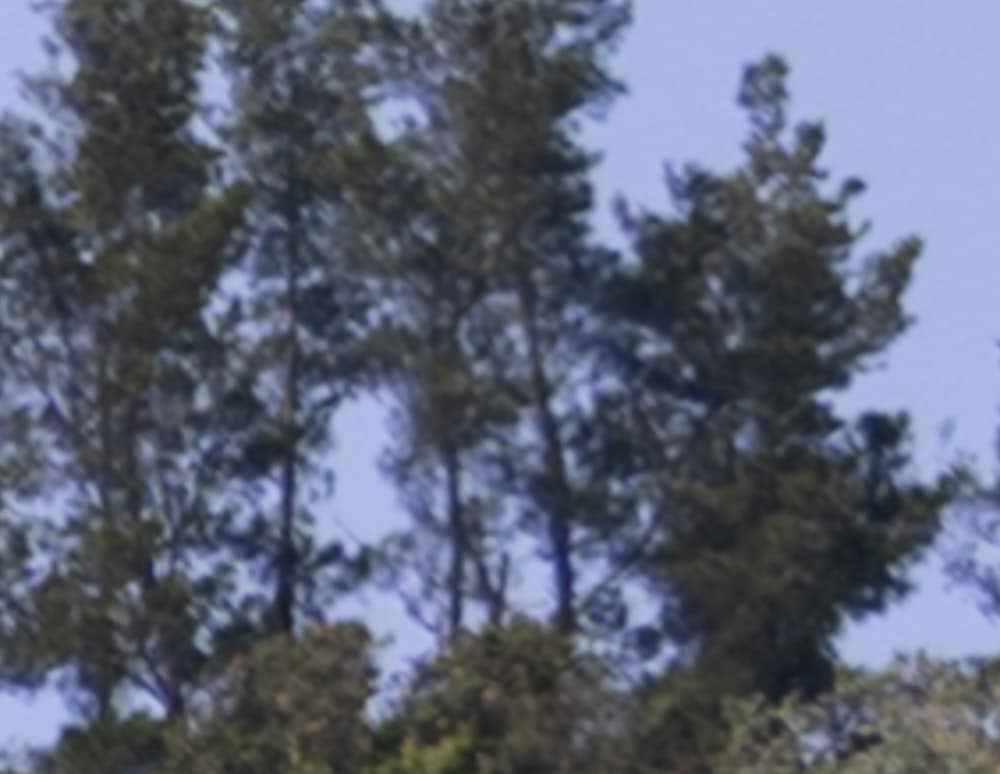
The differences in favor of the Fuji are even more apparent in the corner.
Stopping down,
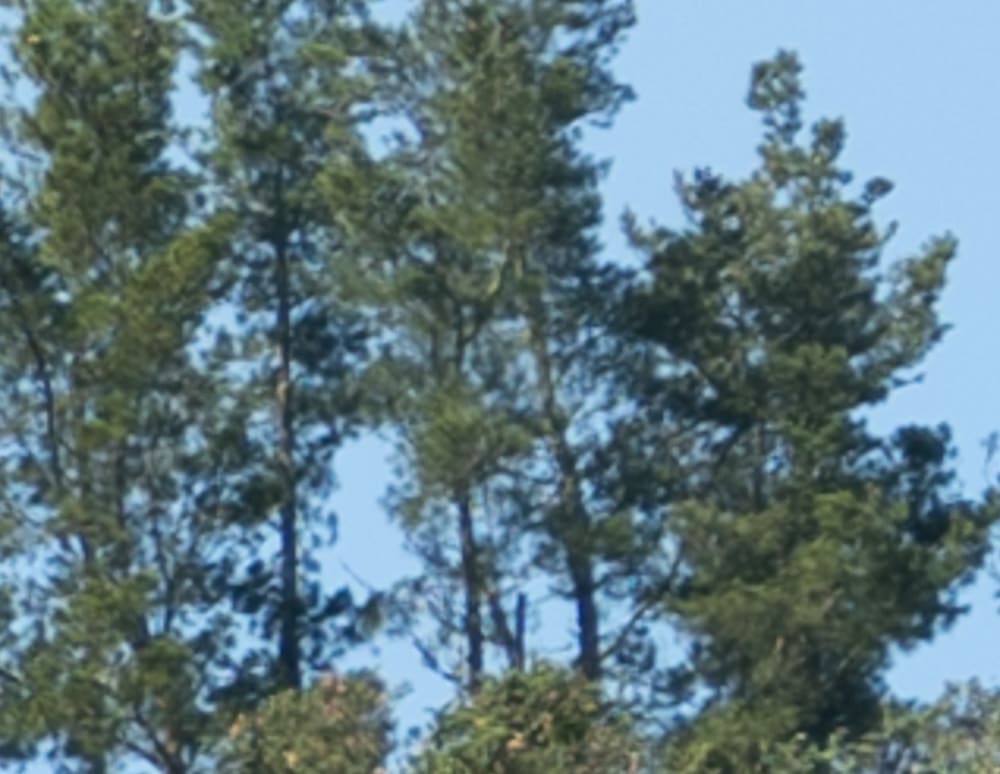
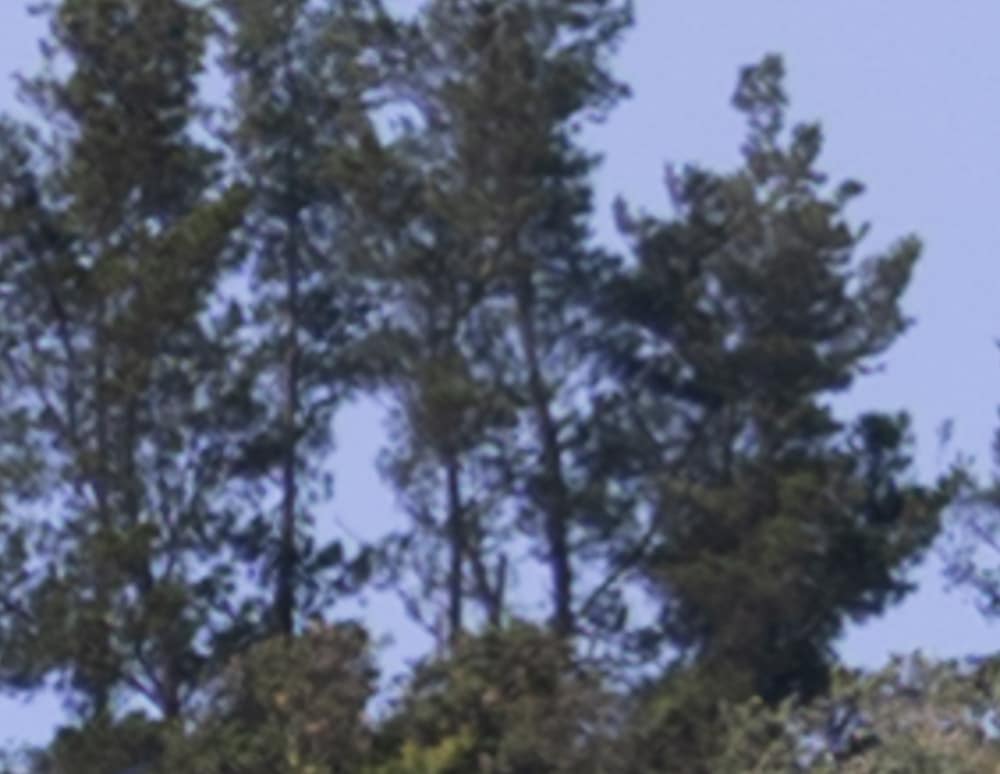
Same thing, again.
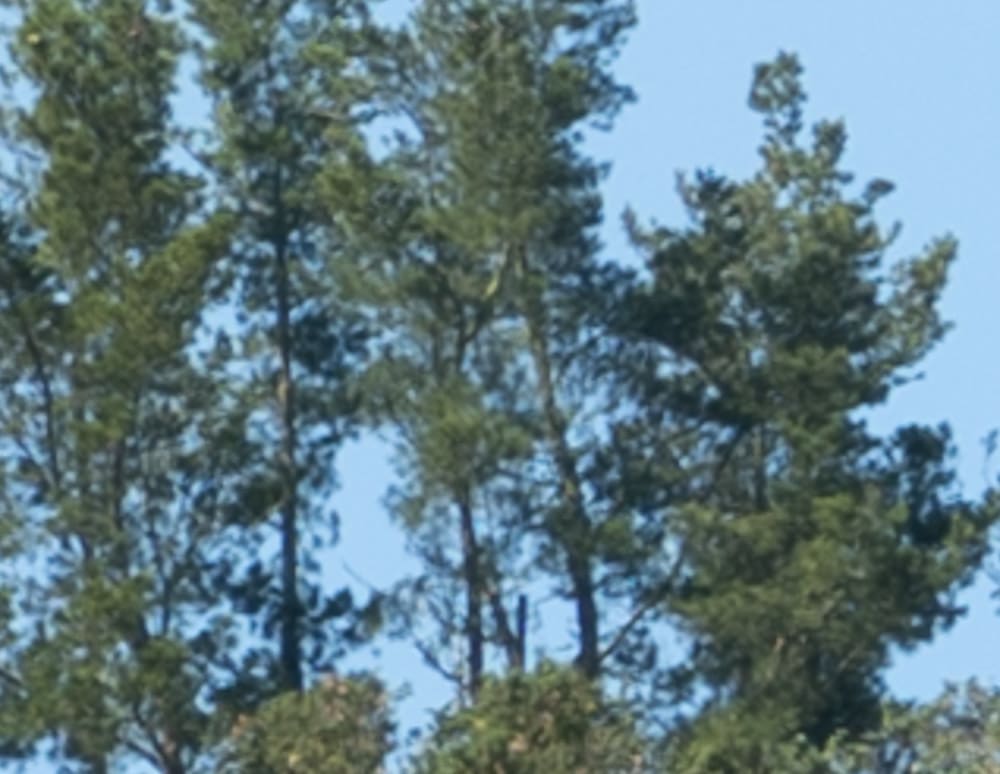
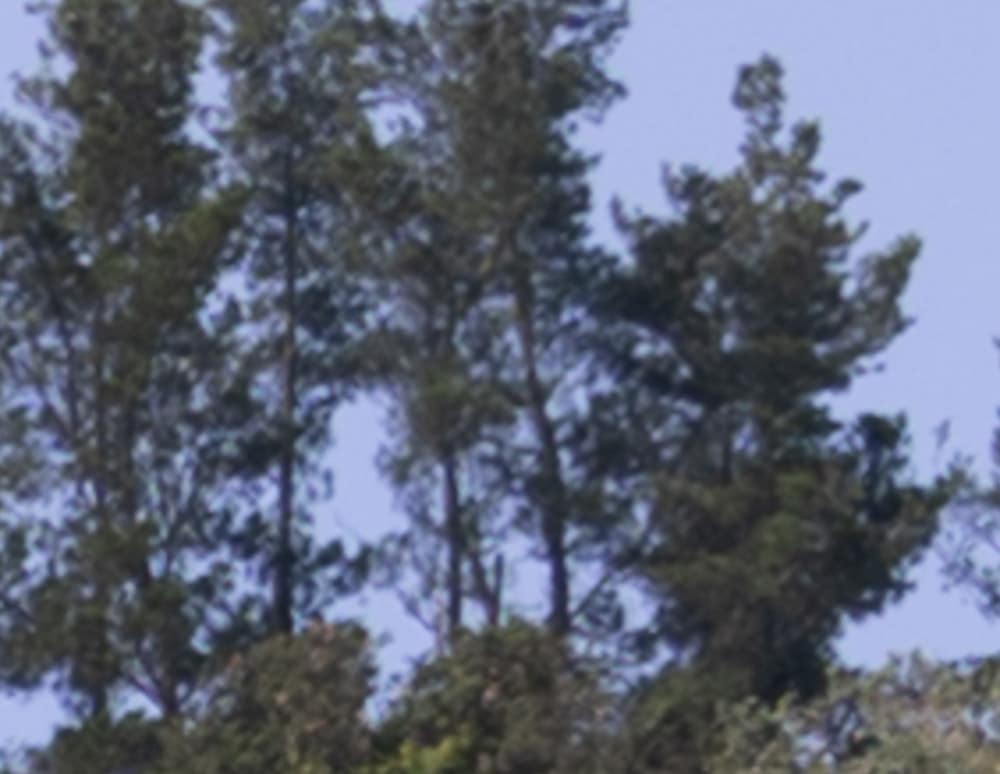
Pretty consistent.
How is it that a lens built to a price like the 100-200 can show so well against the highly-respected umpty-umpth generation of one of Nikon’s flagship lenses?
It’s the format difference. A bigger format means the lenses can be slower. Making the lens slower makes the design easier.
Next up: the same lenses compared at 200 mm for the Fuji and 145 mm for the Nikon.
[…] The previous post was an informal comparison test contrasting the Fuji 100-200 mm f/5.6 zoom on the GFX 50R against the excellent Nikon 70-200/2.8E on the Nikon Z7 at 100 mm for the Fuji and 70 mm for the Nikon. . Now I’m going to set the Fuji zoom to 200mm and the Nikon one to 145mm. The Z7 and the GFX have the same resolution horizontally, but I’m a fan of 4:3 pictures, so I equalized for image height. If you like wide aspect ratios, you may consider that to be stacking the deck. […]